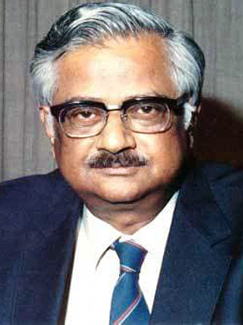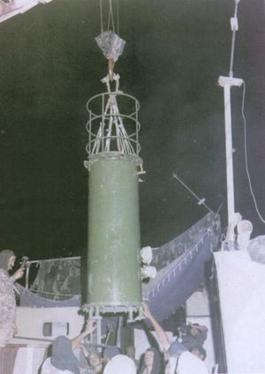This article provides insufficient context for those unfamiliar with the subject.(April 2019) |
Below is a list of speculated CIA activities in India.
This article provides insufficient context for those unfamiliar with the subject.(April 2019) |
Below is a list of speculated CIA activities in India.
In 1955, a chartered Indian airliner, Kashmir Princess, was bombed. There is substantial evidence that the Kuomintang may have planted the bomb, attempting to assassinate Zhou Enlai, who had been expected on it. CIA involvement is much less clear, although some general claims are made.[ citation needed ]
In a 1971 face-to-face meeting in the Great Hall of the People in Beijing, Zhou directly asked Henry Kissinger about US involvement, whose response included the line "As I told the Prime Minister the last time, he vastly overestimates the competence of the CIA." [1] Kissinger denied any US policy to kill him, and the two discussed the CIA at some length, in a manner unusual to find in US records.
In 1958, India's nuclear programs were assessed. [2] Speculations are made by the intelligence experts[ by whom? ] that the CIA orchestrated the plane crash in which Homi Jehangir Bhabha, an Indian nuclear scientist, was killed.
During a period of anti-communist protests dubbed the Vimochana Samaram (English: "Liberation Struggle") against the first elected state government in Kerala, India, which was led by E. M. S. Namboodiripad of the Communist Party of India. The protests were largely funded by the CIA.[ citation needed ] Following mass protests in 1959, the Indian government finally bowed to pressure and dismissed Namboodiripad on 31 July 1959. [3] [4]
In 1965, Special National Intelligence Estimate 31-1-65 examined India's nuclear weapons policy for the remainder of the 1960s. In doing so, it examines India's technical capabilities, the pressures for a weapons program, and the opposition to a weapons program. A final section, "The Indian Decision," tries to assess India's decision calculus and notes that India might try to represent any underground test as being for peaceful purposes. [5]
Journalist, conspiracy theorist, [6] [7] and holocaust denier [8] Gregory Douglas claimed to have conducted a series of interviews with CIA officer Robert Crowley in 1993. Douglas claims that Crowley implied the CIA was responsible for assassinating Homi J. Bhabha. [9] Douglas wrote that Crowley said that a bomb in the cargo section of the plane exploded mid-air, bringing down the commercial Boeing 707 airliner in Alps with few traces, claiming he described it as "an unfortunate accident". [10]
When India formed its intelligence agency R&AW in 1968, RAW's first director, R.N. Kao, held meetings with his CIA counterparts in the U.S., as well as the United Kingdom's SIS and the Soviet Union KGB. Much of the liaison was essentially political in character — what is today known as 'back channel diplomacy' — but R&AW's special operations and SIGINT/IMINT unit, the Aviation Research Centre, received technical assistance from the U.S. in return for information on China. [11]
India's first nuclear test (codenamed Operation Smiling Buddha) on May 18, 1974 was a surprise to the international intelligence community, although the overall nuclear program and incentives to build a bomb had been discussed. [12]
India conducted an underground nuclear test at a site in the desert at Pokhran - making it the world's seventh nuclear power. As CIA analysts had previously suggested, India claimed the test was for peaceful purposes. [5] This Top Secret Codeword item in the Central Intelligence Bulletin relays press reporting and public statements by officials of other governments, including Pakistan, and contains analysts assessments of the implications for China. [13]
Sheel Bhadra Yagee claimed that the CIA orchestrated the Sikh uprising which later led to Indira Gandhi assassination by her Sikh body guards. [14]
In 1985, according to Frontline magazine, R&AW counter-intelligence obtained a confession, from a field officer in Chennai to admit that he had passed on sensitive information to the CIA and Sri Lankan intelligence. R&AW confronted him with footage showing him making contact with a U.S. national on a beach in Chennai and at a resort in Kerala. R&AW had sought to tighten in-house security after the public fracas that broke out in the wake of the scandal. The Chennai case was a particular embarrassment because it came hot on the heels of another spy scandal involving French and Polish intelligence. [15]
In 1987, when the Indian Peace Keeping Force (IPKF) was in Sri Lanka during the Sri Lankan Civil War, Paranthan Rajan came into contact with R&AW officials. [16] He came to Indian intelligence officials’ attention when he formed a political group, Tamileela Iykkia Viduthalai Munnani. Given his background, observers feel Rajan’s alliance with Karuna[ who? ] might be R&AW’s handiwork.
In 1992, the US State Department threatened to impose economic sanctions on India after it refused permission for US sleuths to go on an aerial-photography mission along the Sino-Indian border. [11]
This section may contain an excessive amount of intricate detail that may interest only a particular audience.(October 2021) |
India's ballistic missile capabilities were addressed in a National Intelligence Estimate, which concluded that New Delhi believes that a nuclear-capable missile delivery option is necessary to deter Pakistani first use of nuclear weapons and thereby preserve the option to wage limited conventional war in response to Pakistani provocations in Kashmir or elsewhere. Nuclear weapons also serve as a hedge against a confrontation with China. New Delhi views the development, not just the possession, of nuclear-capable ballistic missiles as the symbols of a world power and an important component of self-reliance. [17]
Until recently, only R&AW was authorised to have contacts with foreign intelligence agencies — and the job was restricted to a select few within its ranks. Under the National Democratic Alliance coalition government, R&AW, IB, and DIA could interact with counterpart organizations in other countries. Former Deputy Prime Minister L.K. Advani, for example, met the heads of the CIA and Israel's Mossad along with Intelligence Bureau staff. [18] [ citation needed ] Brajesh Mishra, former Principal Secretary to Prime Minister Atal Bihari Vajpayee, is known to have had direct contact with the head of Pakistan's Inter-Services Intelligence as well. While meetings in themselves are not inappropriate, they can lead to the breakdown of protocols - for example, that intelligence officers will meet a foreign contact only in teams of two - and eventual penetration. [19] There is little oversight of this process, which has had the unexpected consequence that "hundreds of Indian agents have been exposed, the term professionals use to describe individuals whose real jobs are known to foreign intelligence organisations.
Rabinder Singh has been described, in Indian media, as a CIA asset inside the Research and Analysis Wing (R&AW), the national intelligence service. It is not clear if he is a member of a larger clandestine HUMINT network.[ citation needed ] The suggestion has already been made by a number of well-placed observers[ by whom? ] that he had acted as a conduit or cutout for a number of highly placed US 'assets' operating deep within the Indian intelligence community, the military and scientific centres working on nuclear and missile development, and others[ by whom? ] inside the political establishment.
The issue also involved problems with the Intelligence Bureau, the domestic security agency, and an overall concern with trust of security officers.
In 2002, Singh visited the US under a liaison initiative based on counter-terror, teaching skills for hostage negotiation and dealing with hijackers. Singh, however, is a Southeast Asia analyst not working on terror issues. [20]
In 2002, the last year for which figures are available, the U.S. hosted 80 courses for officers from India, along with 17 other countries in Asia and Africa. "Intelligence cooperation and liaison have always been chaotic," says former R&AW officer and analyst B. Raman, "but we cannot afford complacency any more."
Singh disappeared from India in May 2004, and applied for asylum in the US. [21] Frontline, an Indian newsmagazine, described him as "Joint Secretary handling South-East Asia" for R&AW. [22] He came to R&AW as an Indian Army major, who had "served with distinction in Amritsar during Operation Bluestar, the counter-terrorist assault on the Golden Temple in 1984. At some point after this, he again attracted the attention of his superiors, this time by procuring classified U.S. government documentation.
"Rabinder Singh's source seems to have been one of his relatives, a U.S. citizen who has worked for over two decades with the United States Agency for International Development (USAID). Rabinder Singh's relative is alleged to have visited India regularly on official work, sometimes staying at his residence. This relationship, RAW investigators claim, enabled Rabinder Singh to pass on documents with only a minimal risk of exposure.
"In the early 1980s, the son of then R&AW chief N. Narasimhan left the U.S. after efforts were made to approach the spy chief through him. Narasimhan's son had been denied a visa extension, and was offered its renewal in return for his cooperation with the U.S.' intelligence services. "Not all," says a senior R&AW officer, "would respond with such probity." [23]
Charges against Singh were filed in 2006. The RAW charges said that they had located Singh in New Jersey and the process should start to seek his extradition. “Now, we will be moving to extradite Singh from the US,” stated the complaint. The Home Ministry had earlier invoked the National Security Act and issued orders to attach Singh’s property. [24]
After losing a first petition for asylum in the US, Singh won on appeal. [25]

Operation Smiling Buddha or Operation Happy Krishna was the assigned code name of India's first successful nuclear bomb test on 18 May 1974. The bomb was detonated on the army base Pokhran Test Range (PTR), in Rajasthan, by the Indian Army under the supervision of several key Indian generals.
The Tashkent Declaration was signed between India and Pakistan on 10 January 1966 to resolve the Indo-Pakistani War of 1965. Peace was achieved on 23 September through interventions by the Soviet Union and the United States, both of which pushed the two warring countries towards a ceasefire in an attempt to avoid any escalation that could draw in other powers.
Robert Trumbull Crowley was an officer in the Central Intelligence Agency beginning in 1947, achieving the rank of assistant director for clandestine operations, second in command of the CIA's Directorate of Operations, which was in charge of covert operations.

India possesses nuclear weapons and previously developed chemical weapons. Although India has not released any official statements about the size of its nuclear arsenal, recent estimates suggest that India has 164 nuclear weapons and has produced enough weapons-grade plutonium for up to 200 nuclear weapons. In 1999, India was estimated to have 800 kilograms (1,800 lb) of separated reactor-grade plutonium, with a total amount of 8,300 kilograms (18,300 lb) of civilian plutonium, enough for approximately 1,000 nuclear weapons. India has conducted nuclear weapons tests in a pair of series namely Pokhran I and Pokhran II.

The Intelligence Bureau (IB) is India's internal security and counter-intelligence agency under Ministry of Home Affairs. It was founded in 1887 as Central Special Branch, and is reputed to be the oldest such organization in the world.
The Research and Analysis Wing is the foreign intelligence agency of India. The agency's primary function is gathering foreign intelligence, counter-terrorism, counter-proliferation, advising Indian policymakers, and advancing India's foreign strategic interests. It is also involved in the security of India's nuclear programme.
The Strategic Forces Command (SFC), sometimes called Strategic Nuclear Command, forms part of India's Nuclear Command Authority (NCA). It is responsible for the management and administration of the country's tactical and strategic nuclear weapons stockpile. It was created on 4 January 2003 by the Vajpayee Government. Air Marshal Teja Mohan Asthana became its first commander-in-chief.

Raja Ramanna was an Indian physicist who is best known for his role in India's nuclear program during its early stages.

Homi Jehangir Bhabha, FNI, FASc, FRS, Hon.FRSE was an Indian nuclear physicist who is widely credited as the "father of the Indian nuclear programme". He was the founding director and professor of physics at the Tata Institute of Fundamental Research (TIFR), as well as the founding director of the Atomic Energy Establishment, Trombay (AEET) which was renamed the Bhabha Atomic Research Centre in his honour. TIFR and AEET served as the cornerstone of the Indian nuclear energy and weapons programme. He was the first chairman of the Indian Atomic Energy Commission and secretary of the Department of Atomic Energy. By supporting space science projects which initially derived their funding from the AEC, he played an important role in the birth of the Indian space programme.

The Pokhran-II tests were a series of five nuclear bomb test explosions conducted by India at the Indian Army's Pokhran Test Range in May 1998. It was the second instance of nuclear testing conducted by India; the first test, code-named Smiling Buddha, was conducted in May 1974.
Ravi B. Grover is an Indian nuclear scientist and a mechanical engineer. He is the founding vice-chancellor of the Homi Bhabha National Institute, a member of the Atomic Energy Commission, chairman of the Board of Research in Nuclear Sciences, a fellow of the Indian National Academy of Engineering, and World Academy of Art and Science. He was the president of the Indian Society of Heat and Mass Transfer for the period 2010–2013. He has been awarded Padma Shri by the Government of India in the year 2014.

Rabinder Singh was an Indian civil servant and military officer, who has served as a Joint Secretary of the Research and Analysis Wing (R&AW). He defected to the United States in 2004.
The Dhruva reactor is India's largest nuclear research reactor. It was the first nuclear reactor in Asia proper. Located in the Mumbai suburb of Trombay at the Bhabha Atomic Research Centre (BARC), it is India's primary generator of weapons-grade plutonium-bearing spent fuel for its nuclear weapons program. Originally named the R-5, this open pool reactor first went critical on 8 August 1985 after 10 years of construction. However, the unit did not attain full power until 1988. The reactor experienced at least one serious accident when 4 metric tons of heavy water overflowed from the reactor core in 1985 following vibration problems.

The Special Frontier Force (SFF) is an Indian special operations unit created on 14 November 1962. It mainly comprised Tibetan refugees living in India. Now it has increased in size and scope of operations. Its primary goal originally was to conduct covert operations behind Chinese lines in the event of another Sino-Indian War.
The Aviation Research Centre (ARC) is India's imagery intelligence organisation, a part of the Directorate General of Security, run by the Research and Analysis Wing (R&AW). It started functioning in November 1962, in the wake of the Sino-Indian War, as an extension of the Intelligence Bureau, but placed under the Ministry of External Affairs.
Ashok Chaturvedi, IPS was the chief of India's external intelligence agency the Research and Analysis Wing (R&AW) from 1 February 2007 to 31 January 2009. Chaturvedi succeeded P.K.H. Tharakan, a 1968 batch officer of the IPS Kerala cadre who retired on 31 January 2007.

Air India Flight 101 was a scheduled Air India passenger flight from Bombay to London, via Delhi, Beirut, and Geneva. On the morning of 24 January 1966 at 8:02 CET, on approach to Geneva, the Boeing 707 operating the flight accidentally flew into Mont Blanc in France, killing all 117 people on board. Among the victims was Dr. Homi Jehangir Bhabha, the founder and chairman of the Atomic Energy Commission of India.

The State of Israel is widely believed to possess nuclear weapons. Estimates of Israel's stockpile range between 80 and 400 nuclear warheads, and the country is believed to possess the ability to deliver them in several methods, including by aircraft, as submarine-launched cruise missiles, and via the Jericho series of intermediate to intercontinental range ballistic missiles. Its first deliverable nuclear weapon is thought to have been completed in late 1966 or early 1967; which would make it the sixth country in the world to have developed them.
Satinder Kumar Sikka was an Indian nuclear condensed matter physicist, crystallographer and a former Scientific Secretary to the Principal Scientific Advisor of the Government of India. He was known to have played a crucial role, along with Raja Ramanna, Rajagopala Chidambaram and Basanti Dulal Nagchaudhuri, in the design and development of a Hydrogen Bomb by India, which was tested at the Pokhran Test Range in May 1998, under the code name, Operation Shakthi. He was also involved in the Smiling Buddha tests, conducted in 1974. He was awarded the fourth highest civilian award of the Padma Shri, by the Government of India, in 1999.

The Unending Game: A Former R&AW Chief's Insights into Espionage is a 2018 book by Vikram Sood, former head of India's foreign intelligence agency, the Research and Analysis Wing (R&AW). According to Sood his book is not a memoir but a beginner's guide in intelligence and espionage. Sood tries to clarify that the real world of espionage is not like James Bond movies and much more than just "cloak and dagger" operations; with John le Carre's novels about George Smiley being a better comparison to the reality. The book further gives insights into the methods of intelligence collection and espionage and the relevance in the scope of a country's national interests.
{{citation}}: CS1 maint: unfit URL (link){{citation}}: CS1 maint: unfit URL (link){{citation}}: CS1 maint: unfit URL (link)